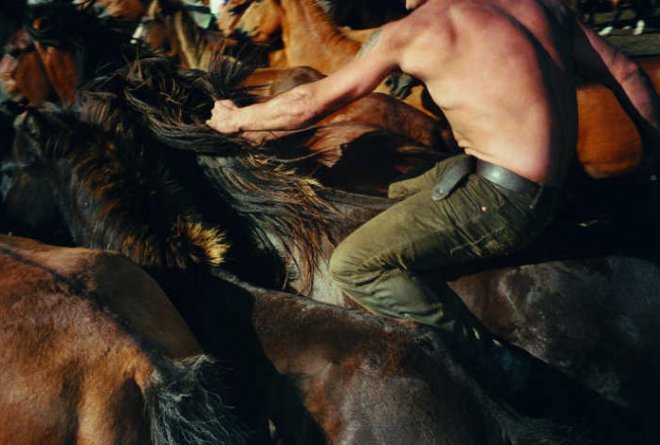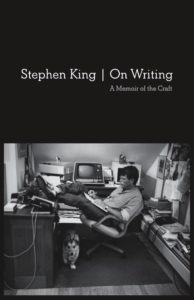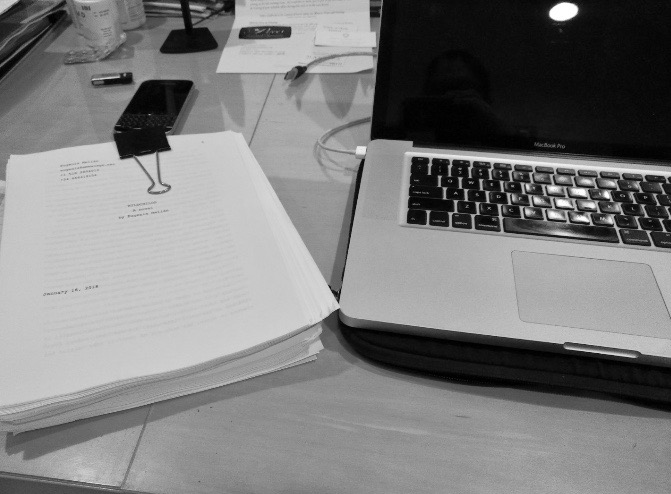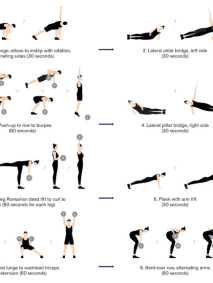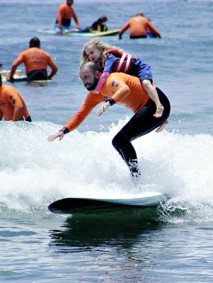Writing my novel Wildchilds
In July 2013 I started writing this blog. My sister Sylvia Melian had insisted so much that I think I did it to get her off my back. Or Sylvia just reminded me that I loved writing and that I had so many things to write about, from the arts and crafts of Andalusia to stories about my three decades as a fashion photographer’s agent in Paris, Milan, Los Angeles and London.
Once I started writing I realized that it was fun and I had so many people I wanted to write about, from the artists friends of my mother who I met when I was a kid growing up in rural Southern Spain, to my life and travels as a Spanish American living between Europe and Northern California.
I wrote many stories from those years when as a kid I watched talents such as Slim Aarons, Jaime Parladé and Russell Page talking to my parents about their art, their passion. Watching them work and create, always faithful to their vision, with no compromise, probably gave me the tools that I would use later on in life when I became an agent and producer.
My brother Cristobal Hara is an incredible art photographer. That helped too. I had never seen pictures that were so raw, so tense. My brother did not have a website to make himself known and he did not want a smartphone to interfere with his work. Looking at his way of living the artist’s life with total freedom and comparing it to the work and life of my new artists who needed to go commercial in order to pay the rent, was a wakeup call. Artists are taught at art school that you cannot use your art to sell things. The conflict between art and commerce is something that I observed throughout my career and a subject that became one of the themes in Wildchilds later on.
In 2013 I was approached by a couple of Hollywood studios that were jumping on the digital content bandwagon and asked me to pitch them fiction based on stories of youth and pop culture. I wrote a few ideas, developed three series. Some were fashion fiction and some were non-fiction. At the meetings I would be told ‘But no one cares about fashion!’ and I would find myself having to explain over and over again why kids love fashion and the culture around it. And how important fashion is as a form of self-expression, craft and art.
I was told my series were too dark. I was told to write something funny like The Devil Wears Prada. I tried, but I could not. Eventually I rewrote one of my dark series and made it funnier and light. It took me four months, only to be told that now they did not want funny, they wanted dark.
At the meetings I would be told ‘but no one cares about fashion!’
After these studios closed their digital branches because they were having problems monetizing the content, I realized that I had spent two years developing content based on my stories and those stories needed to be told. The fashion industry was changing so fast, the digital era had arrived and was disrupting everything. Brands needed to change the way they were reacting to it, shutting social media users out because they feared losing the control of how their lines were being portrayed and repurposed. Brands that micromanaged their image down to the kind of music that is played in their shops, or the beautiful cast of uniformed sales people, scented candles and elaborate shopping bags used, were now seeing the internet community reinterpreting their product and infusing it with a new image, new life, the ones they created and not the ones the brands were forcing on them through their expensive campaigns and head-to-toe looks. The monologue had to become a dialogue because everyone wanted in.
I observed, I read, I listened. I also chatted with kids who were passionate about the early years when designers were so free, when photo shoots were so crazy and when magazine budgets were so vast. I had started working as an agent before the fax machine even existed, I had produced without email, I had been on sets and at parties without a camera phone and social media. People were not “brands” yet and we got away with behaving sometimes in reckless ways. There was no record of it, so who cared?
The monologue had to become a dialogue because everyone wanted in.
In 2015 I decide to write a novel where I could talk about all this through my own stories and be free to tell them as they were; as I had lived them. I wrote about things I had seen, people I had known, experiences I had had. Since I did not know how to write a fiction novel, I bought a bunch of books such as How to Write a Fiction Bestseller, or Writing Fiction for Dummies. I also read the excellent On Writing: A Memoir of the Craft by Stephen King which goes into the head of the writer and then beyond that.
For two months I did all the homework that was in these books. I learnt about arc, back story, chapter structure, subtext, dialog and plot. ‘Show but don’t tell.’
In January 2015 I started. It was hard. I wrote for six hours a day every day of the week. I wrote Saturdays and I wrote Sundays. I found myself ‘in character’ with my characters and I could not leave them alone for more than a day. Some chapters were very difficult to write because I lived with their anger and at times their pain. I lived the situations as they would have lived them, I reacted as they could have reacted. I sank to their levels of despair and then hope again. Sometimes the writing made me feel sick.
On a good day I wrote a few pages. On other days I was content with just one good paragraph. I repeated over and over again to my boyfriend: ‘No one will believe these stories, and probably no one cares.’
I wrote THE END on a first draft which I printed, May 2017. More drafts followed and were quickly covered in fat red Sharpie notes. Weeks became months and then in July 2017, two years and seven months later I had the ‘final’ one. I sent it to my friend Nicanor Cardeñosa who is a journalist and writer and all things tech too. Wildchilds needed a first read and a solid edit. After a short holiday on a remote beach with my beloved boyfriend, I reconnected with nature and reset my mind. Back to Norcal and worked with Nicanor over Skype for the whole month of August, daily three-hour sessions where we moved chapters around, tightened the plot, added a few lines of back story and in places changed the POVs to later change them back again. Wildchilds took on another shape.
As per Stephen King’s advice from On Writing, when I was finished, I let the book lay for a month and revised it again, made more changes and then gave it to eight readers. Their feedback was precious and was all incorporated into the new draft.
Between September and November 2017 the scandal of Harvey Weinstein’s sexual harassments in the Hollywood industry broke. The #MeToo movement was created and in January 2018 another big story about the abuse of power and sexual harassments in the fashion industry made the headlines of the New York Times and the Boston Globe.
Wildchilds is a love story set in the fashion photography and magazine industry. I had written about a romance between a young photographer and his model muse. As the story evolved it became about their struggles and what it took to become famous and make a living in these industries. In Wildchilds I also explored other themes: fast fashion, consumerism, what we think defines us, the price of success and learning to let go. As an agent and producer I had witnessed the bad behavior and abuse of power that I wrote about in my book. I had to publish it, it was about time. Between January and February 2018 I submitted Wildchilds to a bunch of literary agents; some declined it and others did not reply. I know that they are overwhelmed by tons of daily submissions and I could not wait endlessly for someone to pick it up. This story was ‘now.’
I decided to research professional self-publishing and found a wonderful company in Seattle called Girl Friday Productions who helped me make my book: three huge edits followed, marketing strategy, formatting, design and creating content on all distribution platforms. It was a great thing to be helped by a team of professionals who guided me through the complex process of self-publishing a first novel.
While I wrote Wildchilds, I had been thinking of my cover and I had created a mood-board with the faces and people that inspired each character. I spent a lot of time in bookshops browsing through their sections of best-sellers. I was certain that I did not want illustration which seemed to be the trend. I was also certain that I did not want a pretty face because the modeling industry is conflated with prettiness and that was not what my book was about. I wanted something mysterious, graphic, I did not want my characters to be identifiable, I wanted my readers to have their own sense of what they looked like.
While I was writing Wildchilds I met a young, elegant model called Ethan James Green. He told me he was taking pictures and showed me his Instagram feed. I was bowled over by the strength of his pictures, the serene mood, the dignified intimacy of the faces and poses of his subjects. We were on a road trip in Mexico for a few days and when I told him I was writing a fiction about those faraway years, we could not stop chatting. His passion for portrait photography inspired me, and remained in the back of my mind.
Ethan James Green. Self portrait in Vogue Paris
We stayed in touch. He introduced me to a gang of wonderful kids that were in their early twenties and so aware and passionate too. Being with them inspired me and gave me renewed energy to tell those stories because they cared. It came as no surprise the day we decided to work together. My dear friend Shawn Stüssy had designed my beautiful Fashionsphinx.com logo so I was thrilled when he came onboard to design the cover of Wildchilds. At the same time the rest of the team came together….my models Dara Allen and Fernando Cerezo III. The way it was styled, I talk about it here. Ethan had decided that the cover needed fierce and identifiable faces. How could I say no?
Wildchilds was published on the 20 th of September 2018. I am now working with a team of professionals that are moving it in the press and another team which works on promoting it on digital outlets. It takes a village.
I hope you enjoy the ride. I painfully did, and painfully still do. And I will do it all over again.
Eugenia Melian. October 2018.

